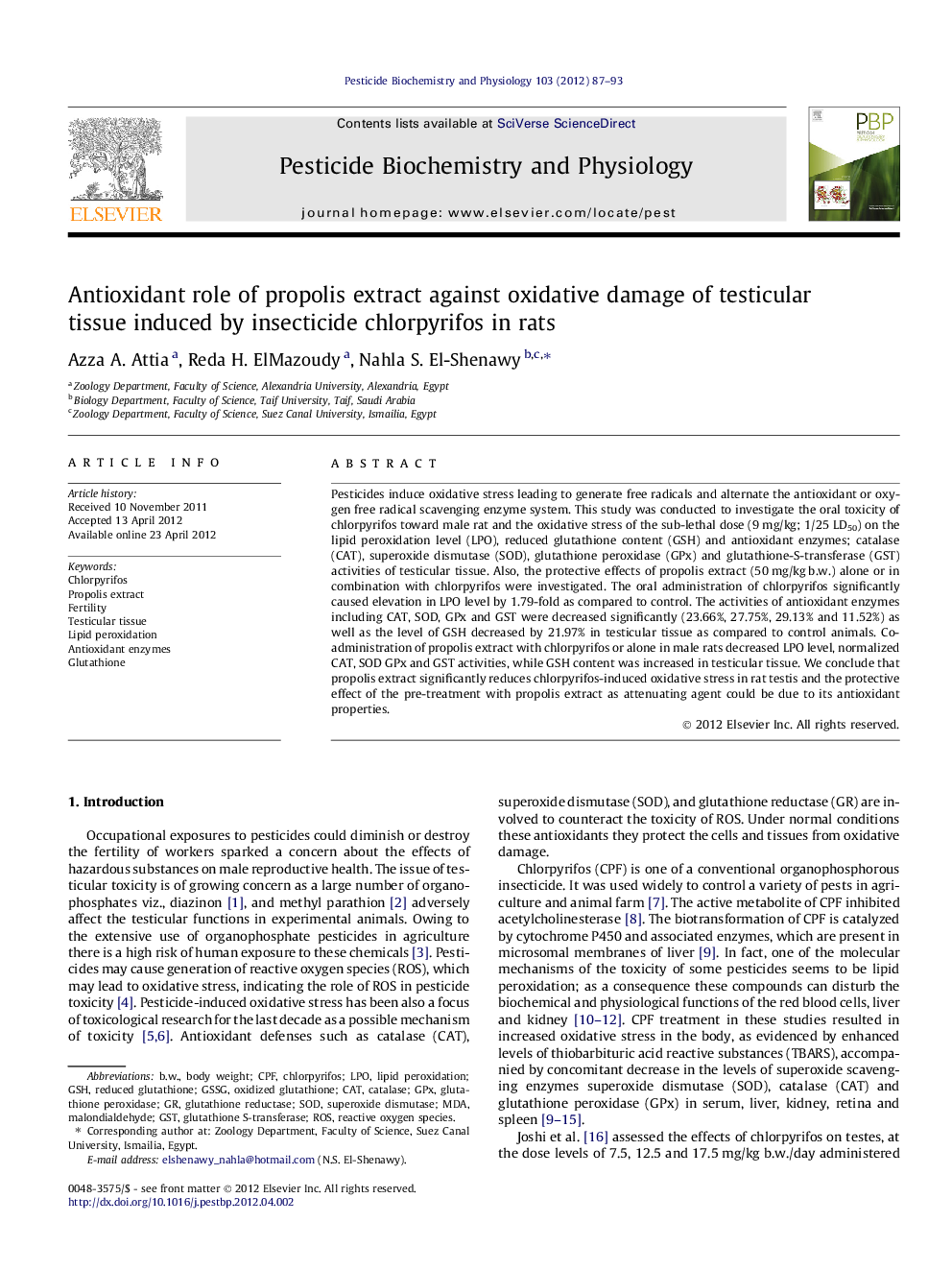| Article ID | Journal | Published Year | Pages | File Type |
|---|---|---|---|---|
| 2009475 | Pesticide Biochemistry and Physiology | 2012 | 7 Pages |
Pesticides induce oxidative stress leading to generate free radicals and alternate the antioxidant or oxygen free radical scavenging enzyme system. This study was conducted to investigate the oral toxicity of chlorpyrifos toward male rat and the oxidative stress of the sub-lethal dose (9 mg/kg; 1/25 LD50) on the lipid peroxidation level (LPO), reduced glutathione content (GSH) and antioxidant enzymes; catalase (CAT), superoxide dismutase (SOD), glutathione peroxidase (GPx) and glutathione-S-transferase (GST) activities of testicular tissue. Also, the protective effects of propolis extract (50 mg/kg b.w.) alone or in combination with chlorpyrifos were investigated. The oral administration of chlorpyrifos significantly caused elevation in LPO level by 1.79-fold as compared to control. The activities of antioxidant enzymes including CAT, SOD, GPx and GST were decreased significantly (23.66%, 27.75%, 29.13% and 11.52%) as well as the level of GSH decreased by 21.97% in testicular tissue as compared to control animals. Co-administration of propolis extract with chlorpyrifos or alone in male rats decreased LPO level, normalized CAT, SOD GPx and GST activities, while GSH content was increased in testicular tissue. We conclude that propolis extract significantly reduces chlorpyrifos-induced oxidative stress in rat testis and the protective effect of the pre-treatment with propolis extract as attenuating agent could be due to its antioxidant properties.
Graphical abstractFigure optionsDownload full-size imageDownload as PowerPoint slideHighlights► The effect of chlorpyrifos on oxidative and antioxidant of testicular tissue. ► Results showed that there was a correlation between CPF and lipid peroxidation. ► Co-administration of propolis to CPF-treated rats restored the redox stat of rats. ► Pre-administration of propolis to CPF-treated animals improved the testicular damage. ► The enzymatic and non-enzymatic antioxidant improved after propolis treatment.
